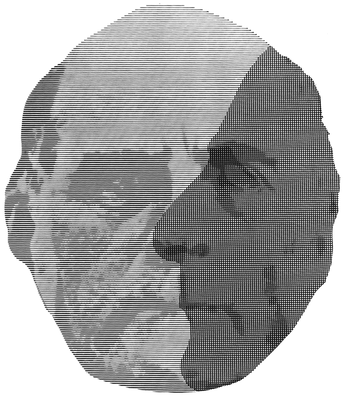Francis Galton1822–1911
Galton was an inveterate measurer who embarked on a natural history of human perception and performance. He measured intelligence and mental imagery, and introduced the methods of word association and of twin-studies. In addition, he developed fingerprinting as a method of identifying individuals, invented the weather map, and assessed both the beauty of women and the boredom of lectures. His impact was most keenly felt in the area of individual differences. Not only did he appreciate that differences could be measured but he also devised a means for comparing them. This was perhaps his most lasting achievement. Rather than comparing the measures themselves they could be related in terms of their variability. This insight arose from his analysis of hereditary genius. Galton was related to Charles Darwin, and was greatly influenced by evolutionary theory. He developed an early interest in personal differences of mental function, linking them both with sensory discrimination and with reaction time. He combined the Darwinian concepts of variability and adaptation with his mathematical leanings to measure individual differences in behaviour, culminating in his Anthropometric Laboratory (1884): thousands paid to have their physical and mental characteristics measured. Galton proposed that mental abilities were normally distributed in the population after the manner of Quetelet’s bell-shaped curves for height and weight, and that they were inherited. He sought support for the importance of nature over nurture (terms he introduced) by asking eminent scientists to complete questionnaires. It was in considering these data in 1888 that Galton “first clearly grasped the important generalization that the laws of heredity were solely concerned with deviations expressed in statistical units”. This was supported by the analysis of data collected from earlier laborious measurements of the dimensions of sweet pea seeds over two generations; he found that the offspring mean reverted to the mean of the population and he tried to devise a measure of this reversion (or regression). Galton was born in Birmingham, where he commenced his medical studies. They were not completed because he developed an interest in mathematics, which he studied at Cambridge, and because his father died leaving him a comfortable inheritance. He became a gentleman scientist in the tradition of Victorian England, with the financial independence to pursue a life of exploration, writing and experimental enquiry. Although he never held a university post he did endow a chair of eugenics (the belief that the most important human characteristics are inherited) to the University of London, and he was a cofounder of the journal Biometrika. Galton experimented with composite photography as well as with photographing the face from different viewpoints. Composites were produced by photographing a number of individuals (initially criminals) on a single plate. He noted that “the special villainous irregularities.. have disappeared, and the common humanity that underlies them has prevailed”. The full-face and profile views of Galton superimposed here were originally taken in Bertillon’s laboratory in Paris when Galton was 71.
